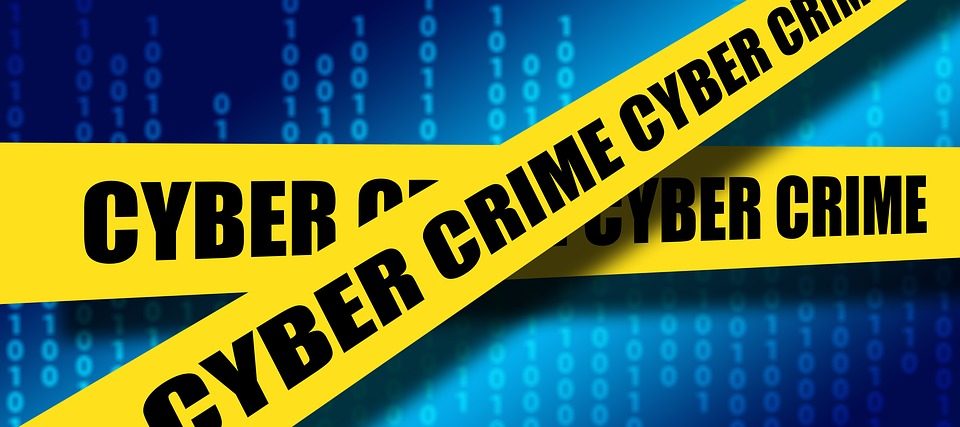
Cybercrime could be defined as criminal activities involving the use of computers and/or the Internet. As the FBI states in their web page: “The FBI is the lead federal agency for investigating cyber-attacks by criminals, overseas adversaries, and terrorists. The threat is incredibly serious—and growing. Cyber intrusions are becoming more commonplace, more dangerous, and more sophisticated.”
In fact, the 2017 Cybercrime Report posted by the Herjavec Group, reported that cybercrime damages will cost the world $6 trillion annually by 2021. Additional highlights of this report included:
Cybercrime costs include damage and destruction of data, stolen money, lost productivity, theft of intellectual property, theft of personal and financial data, embezzlement, fraud, post-attack disruption to the normal course of business, forensic investigation, restoration and deletion of hacked data and systems, and reputational harm.
Cybersecurity Ventures predicts that there will be 6 billion Internet users by 2022, and 7.5 Billion Internet users by 2030. Considering the new devices and application being developed on an annual basis the end result is a growing number of human and digital targets.
Cybersecurity Ventures predicts global spending on cybersecurity products and services will exceed $1 trillion cumulatively over the next five years, from 2017 to 2021. Taken as a whole, we anticipate 12-15 percent year-over-year cybersecurity market growth through 2021.
Cybercrime will more than triple the number of job openings to 3.5 million cybersecurity unfilled positions by 2021, and the cybersecurity unemployment rate will remain at zero percent.
The demand for cybersecurity professionals will increase to approximately 6 million globally by 2019, according to some industry experts cited by the Palo Alto Networks Research Center.
The cybersecurity workforce shortage has left CISOs (Chief Information Security Officers) and corporate IT security teams shorthanded and scrambling for talent while the cyber-attacks are intensifying.
Cybersecurity Ventures predicts that a business will fall victim to a ransomware attack every 14 seconds by 2019, increasing from every 40 seconds in 2017.
Our interpretation of the above facts is that programs like the Certified HIPAA Security Officer (CHSO) offered by Taino Consultants and EPI Compliance are on the right track and will become very attractive for those looking to improve their career outcomes. Training and education has also been identified as the best “Return on Investment” (ROI) for any organization for the next 5 years.
The “EPI-family” also offers a compliance software that not only provides training for all members of the organizations but also provides up to date policies, forms and even a monthly checklist that assist users and organizations with their security efforts.
Considering that global spending on security awareness training for employees is predicted to reach $10 billion by 2027, up from around $1 billion in 2014. Training employees on how to recognize and defend against cyber-attacks is the most under spent sector of the cybersecurity industry.
There is much to be done when speaking about cybersecurity/cybercrimes and even the FBI has jumped on the bandwagon to assist the public at large with the following recommendations:
- Keep Your Firewall Turned On: A firewall helps protect your computer from hackers who might try to gain access to crash it, delete information, or even steal passwords or other sensitive information. Software firewalls are widely recommended for single computers. The software is prepackaged on some operating systems or can be purchased for individual computers. For multiple networked computers, hardware routers typically provide firewall protection.
- Install or Update Your Antivirus Software: Antivirus software is designed to prevent malicious software programs from embedding into your computer. If it detects malicious code, like a virus or a worm, it works to disarm and/or remove it. Viruses can infect computers without users’ knowledge. Most types of antivirus software can be set up to update automatically.
- Install or Update Your Antispyware Technology: Spyware is just what it sounds like—software that is surreptitiously installed on your computer to let others peer into your activities on the computer. Some spyware collects information about you without your consent or produces unwanted pop-up ads on your web browser. Some operating systems offer free spyware protection, and inexpensive software is readily available for download on the Internet or at your local computer store. Be wary of ads on the Internet offering downloadable antispyware—in some cases these products may be fake and may actually contain spyware or other malicious code. It’s like buying groceries—shop where you trust.
- Keep Your Operating System Up to Date: Computer operating systems are periodically updated to stay in tune with technology requirements and to fix security holes. Be sure to install the updates to ensure your computer has the latest protection.
- Be Careful What You Download: Carelessly downloading e-mail attachments can circumvent even the most vigilant anti-virus software. Never open an e-mail attachment from someone you don’t know and be wary of forwarded attachments from people you do know. They may have unwittingly advanced malicious code.
- Turn Off Your Computer: With the growth of high-speed Internet connections, many opt to leave their computers on and ready for action. The downside is that being “always on” renders computers more susceptible. Beyond firewall protection, which is designed to fend off unwanted attacks, turning the computer off effectively severs an attacker’s connection—be it spyware or a botnet that employs your computer’s resources to reach out to other unwitting users.
The take away for everyone is simple:
- Recognize the reality that cybercrime represents and the opportunities in the cybersecurity field;
- Invest in education and security certification programs.
